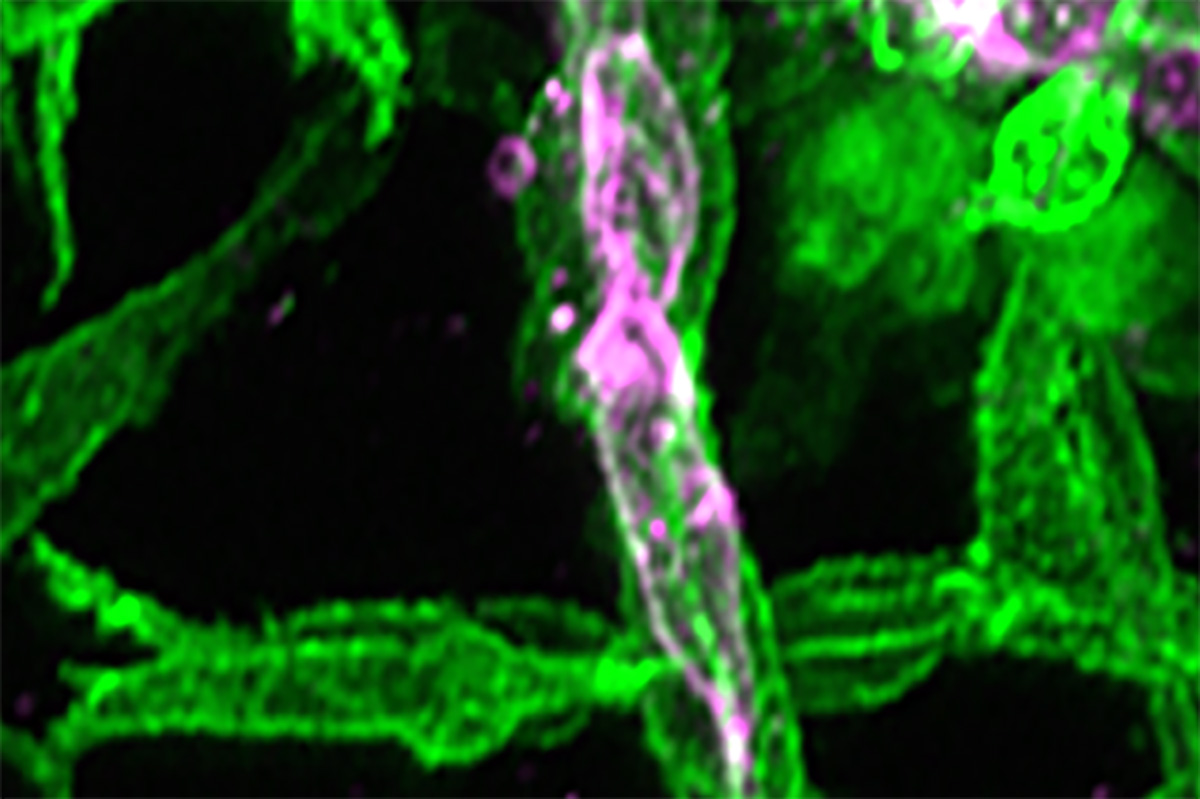
Cancer relies on many tricks to survive and grow. One tactic is to manipulate cells in the noncancerous tissues and cells surrounding a tumor to help the cancer cells spread. Researchers have learned that cancer seems to have a particular fondness for nerves, traveling along them as if they were highways.
The effect is especially strong in tumors that arise in organs with an abundance of nerves, such as those occurring in pancreatic cancer. What has not been clear, however, is exactly how cancer cells enlist the nerves to help them spread.
New Findings on the Role of Schwann Cells in Cancer Growth
Now the laboratory of Memorial Sloan Kettering Cancer Center (MSK) physician-scientist Richard J. Wong has found that pancreatic cancer cells activate nerve-supporting cells known as Schwann cells. The cancer cells induce the Schwann cells to reprogram themselves and form tracks through which pancreatic cancer cells can readily travel. In addition, the Schwann cells directly help the cancer cells move through the tracks.
“Schwann cells are normally inactive, but they undergo a remarkable transformation upon contact with cancer cells — they become activated into very dynamic, mobile, and interactive cells,” Dr. Wong says. “These Schwann cells not only organize into tracks but they also push and pull the cancer cells, ushering them along this pathway.”
The researchers also discovered that a protein called c-Jun is key to redirecting the Schwann cells to build the tracks and coax the cancer along. The implication of this discovery is important: The scientists showed that blocking c-Jun in the Schwann cells slowed pancreatic cancer spread in mice. This could potentially lead to therapies that hinder metastasis.
The researchers published their findings July 26, 2022, in the journal Cancer Discovery.
What Are Schwann Cells?
Schwann cells are found throughout the peripheral nervous system, the part outside the brain and spinal cord. The Schwann cells wrap around nerve cells like insulation around an electric cable. They protect the nerves and help conduct signals, making them zip along faster.
“When people think of nervous system cells, they tend to think of neurons, which transmit signals,” says Sylvie Deborde, an assistant attending biologist in the Wong Lab and the study’s first author. “Schwann cells have traditionally been somewhat overlooked, but we have been able to use newer research tools to reveal that they have functions we didn’t expect.”
How Do Cancer Cells Hijack Schwann Cells?
Researchers knew that Schwann cells help repair damaged nerves by laying tracks along which new nerve cells can grow to reestablish connections. The new study shows that cancer cells exploit this wound-repair process for their own purpose — and the Schwann cells join in directly to help.
“We’re seeing a normal nerve repair mechanism get hijacked by cancer cells, enabling their migration,” Dr. Wong says. “It’s a compelling finding — there aren’t many examples of normal cells reprogramming and cooperating with cancer cells to help them spread.”
The researchers used several experimental approaches to identify how Schwann cells help cancer spread. They analyzed Schwann cells in human pancreatic tumors and saw that if the gene signature for Schwann cells is increased, the patients did not live as long. This suggested Schwann cells can contribute to disease progression and may worsen survival.
In mice, they demonstrated that knocking out the gene for c-Jun in Schwann cells made it harder for cancer cells to spread along the nerves. “We injected cancer cells in normal mice and also in mice with Schwann cell c-Jun knocked out, and tracked how far the cancers traveled along nerves in each condition, sort of like a race,” Dr. Wong says. “We compared the distances and found that c-Jun in Schwann cells helps the cancer travel further along the nerve.”
Schwann Cells Make Tracks for Cancer Cells
When grown in a gel in a lab dish, Schwann cells line up to create tracks that extend deep into the gel. Interestingly, when mixed with cancer cells, the cancer cells seemed to use these tracks as a transit system. “We saw that the cancer cells could invade deep into the gel when traveling along these Schwann cell tracks,” Dr. Deborde says. “When using Schwann cells with c-Jun knocked out, the tracks fail to form and the cancer cells could not invade as deep.”

But the most captivating evidence came from studying cancer cells and Schwann cells interacting in a lab dish using tricks to reconstitute the three-dimensional conditions by putting the Schwann cells into tiny tubes called microchannels. The researchers use microscopy imaging — where a microscope zooms in on very small details — to take photos and make brief time-lapse movies.
“We saw the Schwann cells lining up within the tubes and the cancer cells crawling along inside,” Dr. Wong says. “But the Schwann cells are not just a passive track — they also can exert forces on the cancer cells to increase cancer motility. We found that some Schwann cells push cancer cells, while other Schwann cells grab and pull on the cancer cells. We even saw a Schwann cell encircling a cancer cell and squeezing it, pushing it forward like toothpaste out of a tube.”
What’s Next for Schwann Cell Cancer Research?
Drs. Wong and Deborde say the next step is to determine if Schwann cells play the same role in spreading other types of cancers, especially those with a lot of nerves in the tissue. They also want to find out how the whole process starts. What activates the Schwann cells and triggers c-Jun to initiate reprogramming? Importantly, they also hope to target c-Jun with drugs to stop the Schwann cells from helping cancer to migrate.
“Most scientists are trying to figure out how to kill the cancer,” says Dr. Wong. “But we want to think about how to change the cancer ecosystem to make it less hospitable, and to take away the things the cancer needs to spread.”
- Schwann cells wrap around nerve cells like insulation around an electric cable.
- They organize into tracks through which pancreatic cancer cells can readily travel.
- Schwann cells also push and pull the cancer cells, ushering them along.
- A protein called c-Jun is key to this process.





